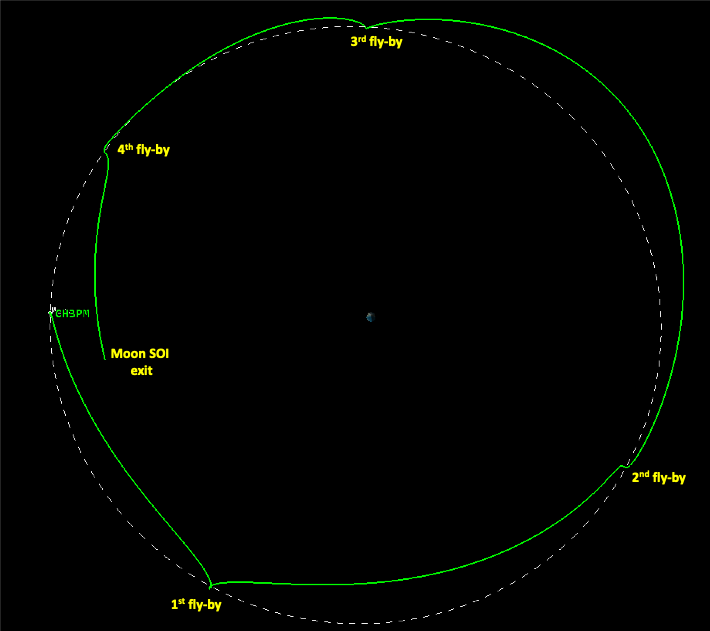
Table of Contents
Introduction
Chandrayaan 3 Propulsion Module Return to Earth: In a groundbreaking development, the Indian Space Research Organisation (ISRO) has achieved a significant milestone by successfully bringing back the propulsion module of Chandrayaan-3 from the lunar orbit to Earth’s orbit. This achievement underscores ISRO’s prowess not only in sending objects into space but, crucially, in safely bringing them back—a capability that holds the key to future lunar missions.
The Detour Experiment: Chandrayaan 3 Propulsion Module Return
ISRO’s statement issued on Tuesday announced the successful detour of Chandrayaan-3’s propulsion module from the lunar orbit to Earth’s orbit. This detour involved precise maneuvers, including an orbit-raising maneuver and a trans-Earth injection maneuver, placing the propulsion module in an Earth-bound orbit. The unexpected success of this experiment is a testament to ISRO’s commitment to pushing boundaries and testing capabilities beyond the primary mission objectives.


Setting the Stage for Future Missions: The ‘Hop Experiment’ Context
This accomplishment comes as the second experiment conducted alongside the primary Chandrayaan-3 mission, following the ‘hop experiment’ on September 3. The hop experiment aimed to test India’s capabilities and systems for lunar missions, specifically focusing on the safe return of samples to Earth. Both experiments, although not initially planned, have proven instrumental in shaping ISRO’s strategies for upcoming lunar endeavors.
Unexpected Success: Return of the Chandrayaan 3 Propulsion Module to Earth
While neither experiment was part of the primary mission plan, ISRO seized the opportunity to conduct them once the primary objectives were achieved. The propulsion module, initially designed to ferry the lander module from geosynchronous transfer orbit (GTO) to the final lunar polar circular orbit, exceeded expectations. Over 100kg of reserve fuel remained after one month of operations in lunar orbit, paving the way for the bonus experiment of Chandrayaan 3 propulsion module return to Earth.
Maneuvering the Return: How it Was Done
Officials at ISRO explained that Chandrayaan 3 propulsion module return to Earth’s orbit involved a series of maneuvers similar to those conducted for sending lander and rover modules to the Moon. The first maneuver, performed on October 9, raised the apolune altitude from 150km to 5112km, increasing the orbit period from 2.1 hours to 7.2 hours. Subsequently, a trans-Earth injection (TEI) maneuver on October 13 set the propulsion module on a trajectory to enter Earth’s sphere of influence.

Significance of the Journey: Gravity Assist Fly-By and Cost-Effective Missions
One of the noteworthy aspects of this achievement is that ISRO conducted a gravity assist fly-by around the Moon—an innovative use of celestial objects’ gravity to propel a spacecraft. This method, not previously attempted around another celestial body, allows ISRO to save fuel and enhance mission cost-effectiveness. The Chandrayaan-3 spacecraft’s journey took over 40 days, and this novel approach contributed to its efficiency.
Avoiding Uncontrolled Crashing: Mitigating Space Debris
By bringing back the propulsion module, ISRO successfully avoided its uncontrolled crashing on the Moon’s surface at the end of its life. This proactive measure prevents the creation of unnecessary space debris, aligning with responsible space exploration practices.
Future Plans: Chandrayaan-3 Follow-Up Missions
ISRO’s plan for follow-up missions, detailed in its submission to the Ministry of Science and Technology, includes testing systems for docking and robotics, planning sample returns and long-duration missions, and conducting in-situ resource utilization. The data gathered from Chandrayaan-3 experiments, coupled with insights from Gaganyaan missions, will contribute to enhancing ISRO’s systems for future lunar exploration.
Conclusion: A Leap Towards Lunar Exploration Goals
In conclusion, the successful return of Chandrayaan-3’s propulsion module marks a crucial step forward for ISRO in achieving its lunar exploration goals. These experiments not only expand our understanding of lunar missions but also play a pivotal role in preparing for ambitious future endeavors, including sending humans to the Moon and bringing them back safely. As ISRO continues to push the boundaries of space exploration, the knowledge gained from these experiments will undoubtedly shape the future of Indian space missions, ultimately leading to the realization of Prime Minister Narendra Modi’s directive to send the first Indian to the Moon by 2040. Stay tuned for more updates as ISRO propels India further into the realms of space exploration.
You can also read:


3 thoughts on “Chandrayaan 3 Propulsion Module Return: A Pivotal Experiment for Future Lunar Missions!”